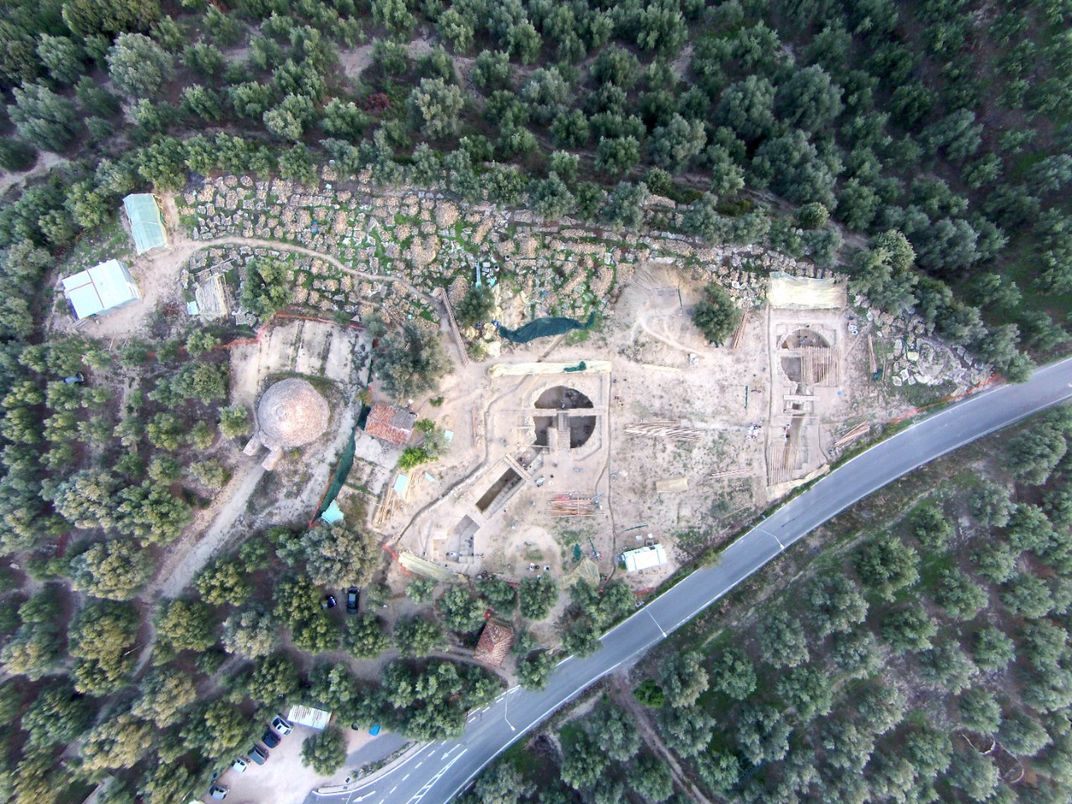Artifacts in Gold-Lined Tombs Hint at Ancient Greek Trade Relationships
The gilded graves, built some 3,500 years ago, likely housed high-status individuals who displayed their wealth with objects from abroad
/https://tf-cmsv2-smithsonianmag-media.s3.amazonaws.com/filer/90/da/90daf189-287f-4cc7-85f2-1afc27e58564/1576276500575.jpeg)
Archaeologists have uncovered two 3,500-year-old gold-lined, beehive-shaped tombs in the ancient city of Pylos in southern Greece. Though the tombs, dubbed Tholos VI and Tholos VII, were looted in antiquity, they are still strewn with thousands of pieces of gold leaf that had once adorned their walls and floors, reports Nicholas Wade for the New York Times.
But the tombs’ true treasures may actually be the foreign-looking ornaments and jewelry found within. These artifacts suggest that the ancient residents of Pylos were more interconnected with other parts of the world, including Egypt and the Near East, than previously thought.
“What is emerging … is that Pylos was a real powerhouse in the early Mycenaean period,” Jeremy B. Rutter, a Mycenaean archaeologist at Dartmouth College who wasn’t involved in the excavation, tells Wade.
University of Cincinnati archaeologists Jack Davis and Sharon Stocker first came across the tombs last year on a return trip to Pylos. Three years earlier, the pair had uncovered the final resting place of a high-status—and possibly royal—Greek man just outside of the ancient city’s palace. His burial site included an ostentatious shaft grave complete with a long bronze sword, a wealth of Minoan artwork, gold jewelry and an ivory plaque. The plaque was engraved with a mythological beast, part-eagle and part-lion, earning the tomb’s resident the nickname of “Griffin Warrior.”

A week into excavating the two new tombs, which also appear to house members of the social elite, the researchers realized “that lightning had struck again,” says Davis in a statement.
All three graves date to some of the earliest days of of the Mycenaean civilization, which was active between 1,600 and 1,500 B.C. The time period remains poorly understood, but crucial.
“[These are] the formative years that will give rise to the Classic Age of Greece,” says Stocker in the statement.
Together, the three graves’ artifacts are now helping archaeologists unravel the goings-on of Greek life at this critical historical juncture.
Described as “princely,” the Tholos tombs, like their griffin-themed neighbor, clearly denote their residents’ resplendence in life. Chock full of amber from the Baltic, amethyst from Egypt, imported carnelian and plenty of gold, they’re also surprisingly cosmopolitan, hinting at the presence of active and far-reaching trade markets in Pylos. Also present was a golden pendant depicting the head of the Egyptian goddess Hathor—a prominent cultural symbol that, despite its foreign origin, was precious enough to join its owner in death.
/https://tf-cmsv2-smithsonianmag-media.s3.amazonaws.com/filer/01/af/01af5a0b-a1b0-4608-b9e8-3d7c0ee1940b/screen_shot_2019-12-18_at_92001_am.png)
The presence of Minoan artifacts in all three tombs also clarifies how the Mycenaeans might have used objects and imagery from this sister civilization, based on the island of Crete, to display their status. That meant “weapons, big-time architecture, lots of gold, and seal stones,” explains Rutter to Wade.
Some of the gold-lined tombs’ artifacts speak to more everyday aspects of life as well, according to the statement. Emblazoned on one of the gold rings is a pair of bulls wreathed by sheaves of barley.
“It’s an interesting scene of animal husbandry,” says Davis in the statement. “As far as we know, it’s the only representation of grain in the art of Crete or Minoan civilization.”
Situated on Greece’s western coast, ancient Pylos was home to a large port—one that the team now suspects was a bustling hub for international trade.
“What we’re learning,” says Stocker, “is that [Pylos was] a much more central and important place on the Bronze Age trade route.”
/https://tf-cmsv2-smithsonianmag-media.s3.amazonaws.com/accounts/headshot/10172852_10152012979290896_320129237_n.jpg)
/https://tf-cmsv2-smithsonianmag-media.s3.amazonaws.com/accounts/headshot/10172852_10152012979290896_320129237_n.jpg)